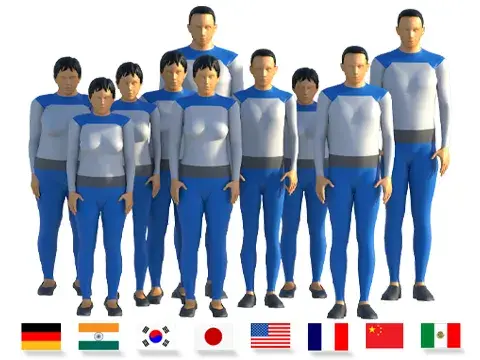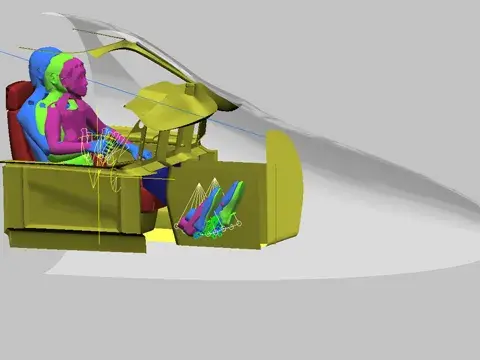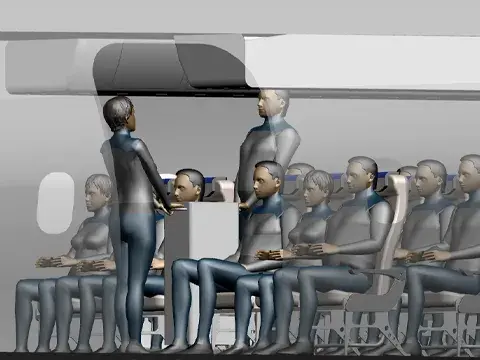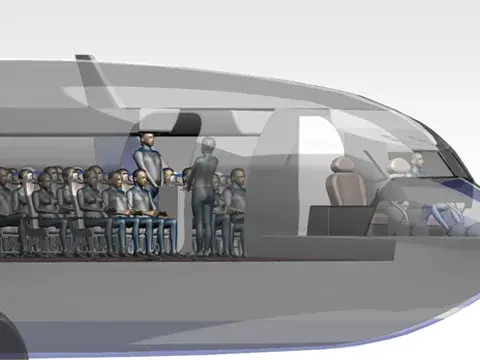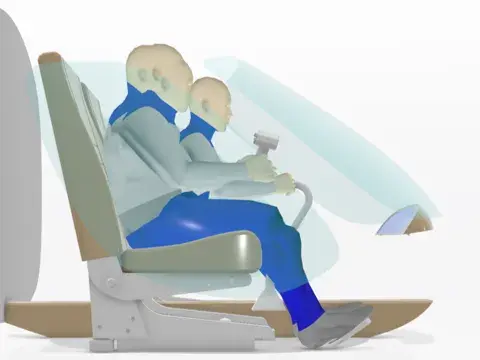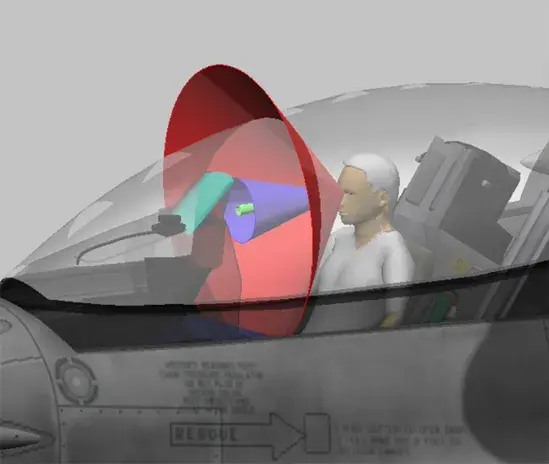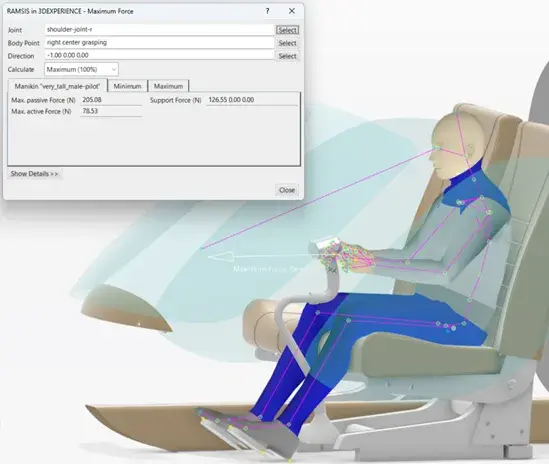RAMSIS for Aerospace: Ergonomics at Altitude
Aircraft design is about more than performance in the air — it’s about the experience, safety, and wellbeing of passengers and crew. From cockpit to cabin, every space must be optimized for comfort, accessibility, and compliance with strict aviation standards. RAMSIS, the world’s leading ergonomic simulation tool, enables aerospace engineers and designers to integrate the human perspective into the design process early on. By simulating realistic body dimensions, postures, and movements in CAD, RAMSIS helps reduce redesign costs, meet regulatory requirements, and deliver safer, more comfortable aircraft.
Start Designing with RAMSIS
Why Aerospace Engineers Choose RAMSIS
The Challenge: Complex Human Factors in Aviation. Aviation pushes ergonomics to the limit, with:
| Cabin Constraints | Limited space and dense seating layouts make passenger comfort and accessibility difficult to achieve. | Crew Workload | Flight attendants handle heavy trolleys and operate in narrow aisles, often over long duty hours. | Emergency Safety | Evacuation must be possible for diverse passengers within seconds, in low-light or high-stress conditions. | Strict Regulations | Compliance with FAA, EASA, and ICAO standards is mandatory across every aspect of design. |

With access to the largest global anthropometric database, RAMSIS creates realistic digital manikins that reflect the diversity of passengers and crew — accounting for differences in size, gender, age, and physical ability. Integrated directly into CAD workflows, it provides aerospace teams with evidence-based insights to make human-centered decisions.
| Proven in Aerospace | RAMSIS is most widely adopted in aviation, trusted by Airbus and leading manufacturers. | Reduced Development Costs | Early virtual testing minimizes physical prototypes, shortens design cycles, and lowers program costs. | Expanding Capabilities | New posture models for helicopters and jet aircraft extend RAMSIS’ aerospace applications. | Regulatory Confidence | Validate cabin layouts against international aviation safety requirements. |
